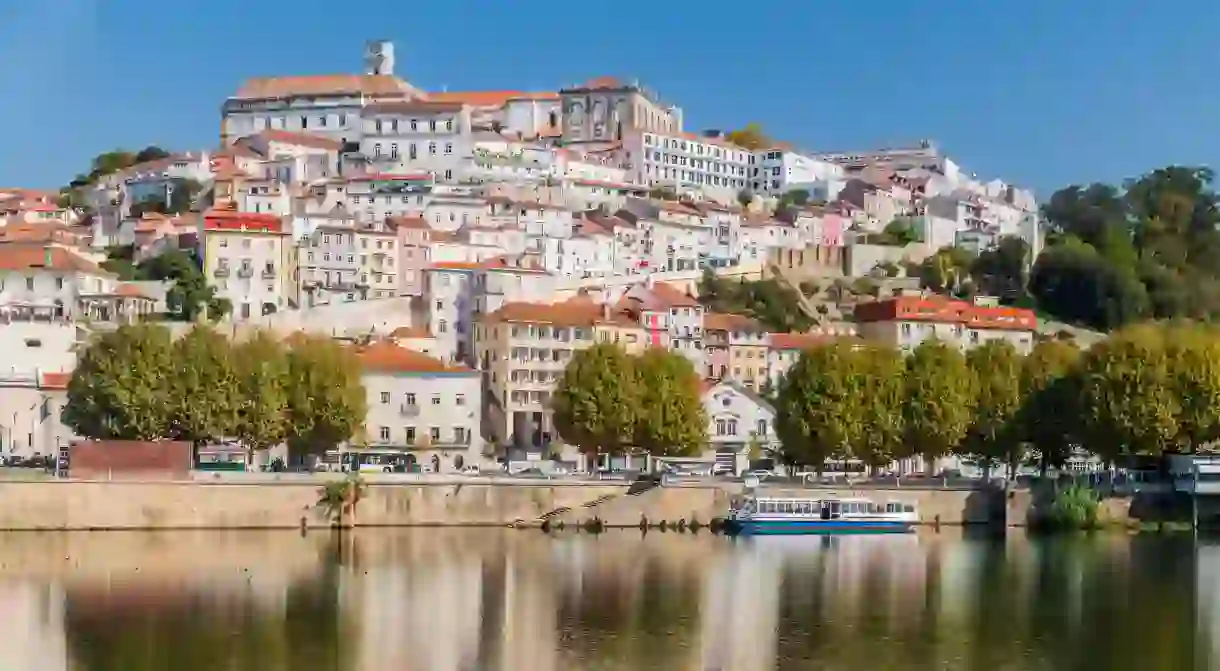The Best Things to Do in Coimbra, Portugal

This higgledy-piggledy university town is as beautiful and historic as Lisbon and Porto, but more compact (and less visited). You’ll practically have its authentic architecture, monastery and museums to yourself. Here’s our guide on how to spend your time in this charming town.
It was the capital of Portugal for more than a century – so why is Coimbra so under the radar? A two-hour train from Lisbon, this city is a laid-back alternative to the big-hitters, where you can delve into the country’s abundant history with plenty of breathing space. While it’s further from Portugal’s international airports, you get to potter around in peace, soaking in the faded romance of its peeling mansion facades. Here, elegantly tiled cafes and bakeries host coffee-sipping locals, bemused by the odd visitor snapping photos.
Nose around the oldest university in Portugal
Botanical Garden, Library, University, Cathedral

Visit the miniature village
Park, University

See design history at Sé Velha Cathedral
Cathedral

Architecture buffs should seek out the layers of Moorish, Renaissance, Romanesque and baroque design built into the impressive Sé Velha, a fortress-like cathedral at the heart of the city influenced by generations of Coimbrans. Look out for the Porta Especiosa (beautiful door), the ornate gothic altar inside and the interior, which is mostly decorated with Romanesque floral and nature motifs, rather than the usual, human-focused Biblical scenes. Take a peaceful moment in the shade of the gothic cloisters to admire the central courtyard.
Sip coffee in a beautiful old church
Cafe, Coffee

Pull up a pew for drinks at Cafe Santa Cruz, built into the cavernous former Church of São João, which dates to 1530. Dappled light streams in through the intricate stained glass above the entrance, while you sit on medieval-style wooden chairs under impressive stone arches and make your order. Don’t miss the obligatory pasteis de nata (a tart that’s considered a national dish), plus toasted sandwiches, and the house special, crúzios – sugared almond cakes created by nuns. Look out for notices about free fado music nights, too.
Attend one of the most eccentric festivals in Portugal
Cathedral

On the first Friday in May, Coimbra throngs with students marking the end of their final exams, in a festa known as the Queima das Fitas (Burning of the Ribbons). In a century-old tradition, the student body takes to the steps of Sé Velha to sing a stirring fado serenade, then fills the streets with lively parades in the colours of their faculty (red for law, yellow for medicine, and so on) – burning ribbons of the same colour to symbolise the end of academic life. These days it’s more raucous street party than sombre graduation event, with beers doled out to visitors and live music blaring in the streets.
People-watch in Praça da República
Architectural Landmark
Leafy, sprawling and etched with a looping pattern on its paving stones, the broad Praça da República is where students, professionals and visitors cross over. Pull up a canvas chair at one of the informal metal tables to sip a coffee or local Praxis beer, as young cyclists zip past flower vendors and groups of laughing twentysomethings shoot the breeze well into the night. Most of the cafes serve snacks – even plates of fries and croquetas – with each drink.
Explore a crumbling monastery
Monastery

Get a peek into monastic life at the 12th-century Monastery of Santa Cruz, just north of the centre. A relic from Coimbra’s spell as the capital, the monastery is decorated with bas reliefs of the Passion story, as well as an ornate red and gold baroque pipe organ. There are a handful of convents from different eras, too, but most curious is Convento Santa Clara-a-Velha, a complex that’s been eerily abandoned since it was flooded in the 17th century. Once home to the Poor Clare nuns, it has an intriguing mini-museum and useful pamphlets to give context.
Discover unusual museums
Museum

Coimbra’s imposing temples to history, the arts and sciences reflect its educational heritage – there are museums here on subjects varying from zoology to the city’s water supply. Top billing goes to the Museu de Machado de Castro, a grand bishop’s mansion packed full of religious art, sculptures and vintage furniture (though just as many come here for the fab view from the restaurant). Quirkier attractions include Prisão Academica – a two-cell prison where university students were hurled if they got too rambunctious – and Brain Maze, an escape room which enfolds some Portuguese history into the complex tangle of puzzles you must solve to get out.
After visiting these attractions, you’ll need somewhere to recharge your batteries – stay in one of the best hotels in Coimbra, now bookable on Culture Trip. If you want to extend your Portugal adventure, try Porto, where you can relax in traditional bars and world-leading hotels and explore the city with incredible adventures.













